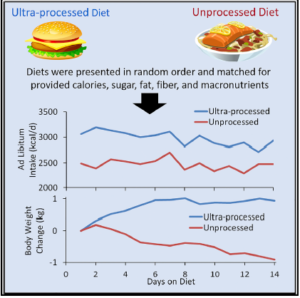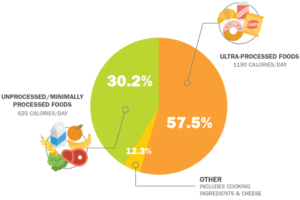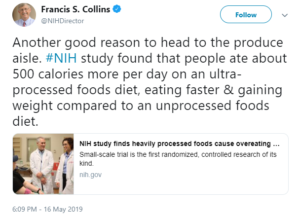A reader, Bart Peuchot, writes:
I would be very interested to have your view on this new publication for Nature.
As you taught me, I checked the competing interests and it seems to be a perfect industry-funded publication.

And then ,I ran across this Tweet (X) from @Stuart Gillespie:
New paper concluding “more research needed”
…brought to you by Nutrition Foundation of Italy…
…which in turn is brought to you by
…..@Nestle @McDonalds @CocaCola Ferrero, Barilla, Danone et al…
Well. What is this about?
I went right to the paper: Visioli, F., Del Rio, D., Fogliano, V. et al. Ultra-processed foods and health: are we correctly interpreting the available evidence?. Eur J Clin Nutr (2024). https://doi.org/10.1038/s41430-024-01515-8
Aha! Another attack on the concept of ultra-processed foods. The article concludes
the available evidence on how different UPFs have been associated with health, as well as the results of studies examining specific food additives, call into question the possibility that ultra-processing per se is the real culprit. It is possible that other unaccounted for confounding factors play an important role. Future, urgently needed studies will clarify this issue.
The Italian food industry has been especially active in opposing NutriScore labels and anything else that might discourage sales of foods high in sugar, salt, and saturated fat.
But it is not alone in pushing back against the concept of ultra-processed foods—an existential threat to junk food manufacturers.
Here, for example, is Hank Cardello, the Executive Director of Leadership Solutions for Health + Prosperity at Georgetown’s Business School writing in Forbes:: New Report Highlights The Sweet Side Of Ultra-Processed Foods.
With ultra-processed foods (UPFs) replacing “junk food” as the new bogeyman for public health advocates, a new study published by the Georgetown University Business for Impact Center (full disclosure: I am one of the authors) reveals that all UPFs are not created equal. The report spotlighted that candy in particular was the exception, since that category contributes only 6.4% of added sugars and less than 2% of our calories. The most surprising discovery is that the “healthiest of the healthiest” consumer cohort in the study purchased candy 26% more frequently than the general population.
The report: New Consumer Insights on Ultra-Processed Indulgent Foods: How Confectionery Products Are Different.
Candy behaves differently from other ultraprocessed indulgent products. New NMI and NHANES data re-confirm that candy is different and should not be lumped together with other indulgent products. Consumers do not overconsume chocolate and candy, so targeting these foods will not impact obesity. An approach that focuses on product categories that consumers with the highest BMIs eat and drink the most will be more effective.
OK, readers: Take a guess at who paid for this.
Funding for this paper was provided by the National Confectioners Association.
As I keep saying, you can’t make this stuff up.






